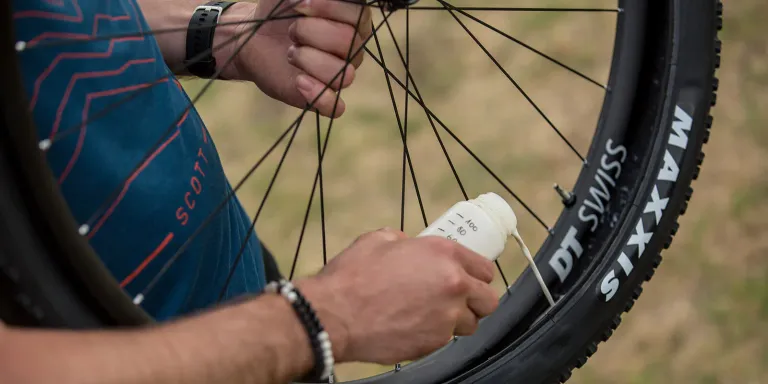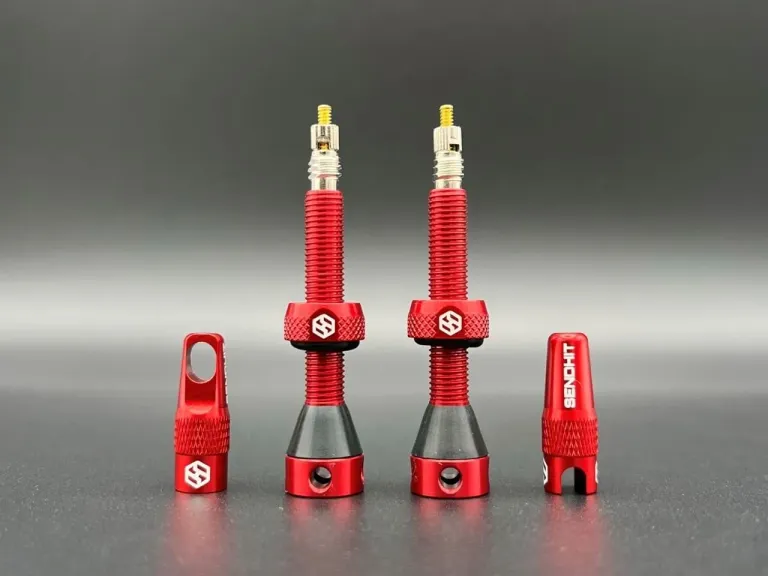Tubeless or Tube? Pros and Cons of Tubeless System
The Pros and Cons of Running a Tubeless Setup on Your Mountain Bike
Switching to a tubeless setup is one of the most common upgrades mountain bikers make. It promises better performance, fewer flats, and a smoother ride, but it’s not without its drawbacks. Let’s dive into the pros and cons of running a tubeless setup on your mountain bike to help you decide if it's the right choice for you.
To begin with, whats a tubeless system? Riding tubeless ni a mountain bike eliminates the need for inner tubes by using specially designed tubeless-ready tires rims, rim tape and sealant that create an airtight seal. Instead of relying on an inner tube to hold air, the tire itself forms a secure bond with the rim, and sealant is added inside to help prevent leaks and seal small punctures automatically.
Pros of a Tubeless Setup
One of the biggest advantages of running tubeless is the reduced risk of pinch flats and punctures. Without an inner tube, you eliminate the possibility of snakebite flats caused by hard impacts. Additionally, tubeless sealant helps seal small punctures on the go, allowing you to keep riding without stopping for a repair.
Tubeless setups allow you to run lower tire pressures without the risk of pinch flats. This results in improved traction and control, especially in technical terrain and wet conditions. More contact with the ground means better grip when cornering and climbing.
By removing inner tubes, you shed some rotational weight from your wheels, which can improve acceleration and make climbing a bit easier. While the weight savings aren’t massive, every gram counts in high-performance riding.
Lower tire pressure means better shock absorption, which leads to a smoother ride. You’ll feel less chatter from roots and rocks, making long rides more comfortable.

Cons of a Tubeless Setup
While tubeless setups reduce flats, they require more maintenance. Sealant needs to be replenished periodically, usually every few months, as it dries out over time. If you ride in hot or dry conditions, you may need to top it off more frequently.
Setting up tubeless tires can be tricky, especially if your rims and tires aren’t perfectly compatible. You’ll need a good floor pump or an air compressor to seat the tires properly. Some riders struggle with getting the bead to seal, leading to frustration.
When riding aggressively or cornering hard, tubeless tires can “burp,” meaning they lose air momentarily as the bead separates from the rim. This can be a problem if you don’t have a tight seal. Additionally, if a puncture is too big for the sealant to fix, it can result in a messy repair situation.
While tubeless setups save money on tubes in the long run, the initial investment can be expensive. You’ll need tubeless-ready rims, tires, sealant, and tubeless specific valves. If your wheels aren’t already tubeless-ready, upgrading can be a significant cost.

If you’re an avid mountain biker who values traction, control, and fewer flats, tubeless is an excellent choice. However, if you prefer a low-maintenance setup and don’t want to deal with sealant and occasional burping issues, sticking with tubes might be better.
In my personal experience, after 10 years of riding my tires tubeless, I’ve never had a flat. The combination of high-quality sealant and properly maintained tubeless tires has allowed me to ride worry-free across a variety of terrains, from rocky trails to muddy paths. Even when encountering small punctures, the sealant has done its job almost instantly, keeping my rides uninterrupted.
If you're switching to a tubeless setup, the next question to ask yourself is: which sealant should you use? I've tested nearly every sealant on the market, and while each has its pros and cons, the recently launched Godfather's Garage Tire Sealant has been the best by far.
Why? Well, no matter which sealant you choose, things are going to get messy. Muc-Off’s sealant is thick and difficult to clean, doesn’t flow quickly to seal punctures, and requires a lot of effort (and rags) to clean.
Stan’s sealant is more liquid and does a solid job sealing holes, but it has a strong odor and tends to evaporate quickly.
On the other hand, Godfather’s is ammonia-free, cleans up easily with water—a huge advantage—and doesn’t dry or at least not as fast. Plus, it’s non-toxic and biodegradable. But still, don't drink it… just in case.
At the end of the day, your riding style, terrain, and personal preference will determine whether a tubeless setup is worth it. Have you made the switch? Let us know your experience in the comments!